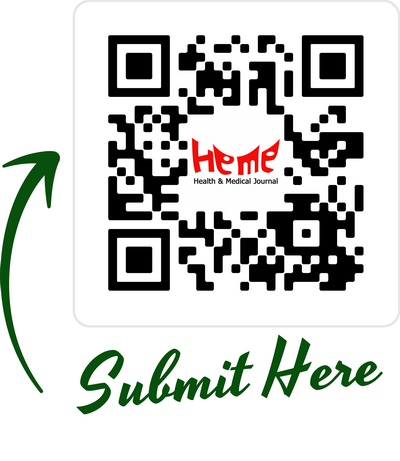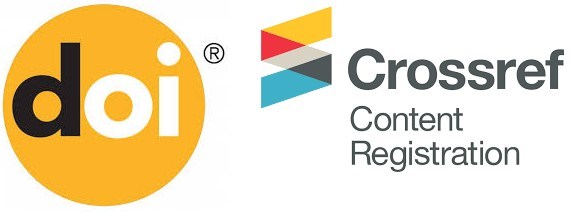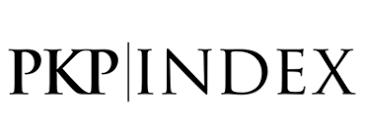Korelasi antara Kadar Interleukin-6 dengan Kadar Reverse Triiodothyronine dan Kadar Hormon Tiroid Lainnya pada Pasien Sakit Kritis dengan Non-Thyroidal Illness Syndrome
Abstract
Pendahuluan: Penyakit kritis dapat disertai dengan perubahan hormon tiroid. Non-thyroidal illness syndrome (NTIs) adalah kelainan tes fungsi tiroid ditandai dengan penurunan kadar triiodothyronine (T3) dan peningkatan kadar reverse triiodothyronine (RT3) pada pasien dengan penyakit sistemik non-tiroid berat tanpa kelainan tiroid sebelumnya dan interleukin (IL)-6 dikatakan terlibat dalam patogenesis NTIs. Tujuan: Mengetahui rerata kadar IL-6, Thyroid Stimulating Hormone (TSH), T3, Thyroxine (T4) dan RT3 pada pasien kritis; Mengetahui hubungan kadaar IL-6 dengan kadar TSH, T3, T4 dan RT3 pada pasien kritis; Mengetahui angka kejadian NTIs. Metode: Penelitian ini merupakan penelitian observasional analitik dengan desain cross-sectional yang dilakukan di RSUP Dr. M. Djamil Padang pada 30 pasien kritis yang memenuhi kriteria inklusi dan eksklusi. Dilakukan pemeriksaan kadar IL-6, TSH, T3, T4 dan RT3. Hasil: Pada penelitian didapatkan rerata kadar IL-6 adalah 37,457 (24,70) pg/ml dan rerata kadar TSH, T3, T4 dan RT3 secara berurutan adalah 1,19 (1,12) uIU/ml, 0,486 (0,30) nmol/L, 60,87 (27,19) nmol/L dan 181,84 (72,10) ng/dL. Terdapat korelasi yang signifikan (p<0.05) dengan arah korelasi negatif dan kekuatan korelasi lemah (r=-0.319) antara IL-6 dan TSH, korelasi kuat (r=-0.6) antara IL-6 dan T3, korelasi lemah (r=-0,302) antara IL-6 dan T4. Terdapat korelasi yang signifikan (p<0,05) dengan korelasi positif dan korelasi sangat kuat (0,944) antara IL-6 dan RT3. Angka kejadian NTI 96,67% dengan gambaran kombinasi hormon terbanyak yaitu TSH normal, T3, T4 rendah, RT3 tinggi sebesar 46,7%. Kesimpulan: Terdapat korelasi negatif antara kadar IL-6 dengan kadar TSH, T3, T4 dan korelasi positif antara kadar IL-6 dan kadar RT3 pada pasien sakit kritis.
Keywords
Full Text:
PDFReferences
. Vanhorebeek I, Derese I, Gunst J, Wouters JP, Hermans G, Berghe VG. Persisting neuroendocrine abnormalities and their association with physical impairment 5 years after critical illness. Critical Care. 2021; 25(430).
. Prama Sapto O, Martuti S, Soebagyo B. Pengaruh euthyroid sick syndrome pada mortalitas anak sakit kritis dalam Sari Pediatri Vol 18. Surakarta : Bagian IKA FK Universitas Sebelas Maret. 2017: 453-8.
. Economidou F, Douka E, Tzanela M, Orfanos S, Kotanidou A. Thyroid function in critical illness. Springer Science. 2015: 91-104.
. Warner HM, Beckett JG. Mechanisms behind the non-thyroidal illness syndrome : an update. Journal of Endocrinology. 2010; 205: 1-13.
. Pappa AT, Vagenakis GA, Alevizaki M. The nonthyroidal illness syndrome in the non-critically ill patient. European Journal of Clinical Investigation. 2011; 41(2): 212-220.
. Ahmed Abdelhameid AM, Kobiesy AM, Hafez El-Dein ZM, Bakr OA. Thyroid dysfunction as a mortality predictor for ICU patients. The Egyptian Journal of Hospital Medicine. 2020; 80(2): 857-64.
. Hershman JM. Euthyroid sick syndrome. School of Medicine at UCLA. 2019.
. Aytug S. Euthyrod sick syndrome. Medscape. 2018.
. Soetedjo Mulyani NN. Nonthyroidal illness (NTIs). Majalah Kedokteran Bandung. 2009; 41(3): 118-123.
. Luca DR, Davis JP, Lin YH, Gionfra F, Percario AZ, Affabris E, et al. Thyroid hormones interaction with immune response, inflammation and non-thyroidal illness syndrom. Frontiers in Cell and Developmental Biology. 2021; 8: 1-9.
. Lee KW, Hwang S, Kim D, Lee GS, Jeong S, Seol MY, et al. Distinct features of nonthyroidal illness in critically ill patients with infectious disease. Medicine. 2016; 95(14).
. Bartalena L, Bogazzi F, Brogioni S, Grasso L, Martino E. Role of cytokines in the pathogenesis of the euthyroid sick syndrome. European Journal of Endocrinology. 1998; 138: 603-14.
. Wajner MS, Larsen RP, Maia LA. IL-6 promotes nonthyroidal illness syndrome by blocking thyroxine activation while promoting thyroid hormone inactivation in human cells. J Clin Invest. 2011; 121 (5): 1834-45.
. McDermott MT. Thyroid disorders in Endocrine Secrets seven edition. Elsavier. 2020: 330-335.
. Boonen E, Berghe VG. Endocrine responses to critical illness : novel insight and therapeutic implications. J Clin Endocrinol Metab. 2014; 99(5): 1569-82.
. Peeters PR. Debaveye Y, Fliers E, Visser JT. Change within the thyroidal axis during critical illness. Critical Care Clinics. 2006: 41-55.
. Hollinger A, Gayat E, Feliot E, Durnteau J, Fournier MC, Leone M, et al. Gender and survival of critically ill patients: results from the FROG-ICU study. Ann Intensive Care. 2019; 43.
. Bashir MA, Osman MM, Mohamed NH, Hilowle AI, Ahmed AH, Osman AA, et al. ICU-managed patients’ epidemiology, characteristics, and outcomes: a retrospective single-center study. Anesthesiol Res Pract. 2023: 19.
. Koerber KM, Agaoglu S, Bichmann A, Tafelski S, Nachtigall I. Female patients with pneumonia in intensive care unit are under risk of fatal outcome. Medicina. 2022; 58(827): 19.
. Peigne V, Somme D, Guerot E, Lenain E, Chatellier G, Fagon YJ, Jean SO. Treatment intensity, age and outcome in medical ICU patients : results of a French administrative database. Ann of Intensive Care. 2016; 6(7).
. Abu-Humaidan AHA, Ahmad MF, Al-Binni AM, Hani BA, Abeeleh AM. Characteristics of adult sepsis patients in the intensive care units in a tertiary hospital in Jordan: an observational study. Crit Care Res Pract. 2021: 18.
. Rosanti FE, Arianto BA, Barus SL. Gambaran karakteristik pasien kritis di area critical unit. Jurnal Kesehatan. 2022; 10(1): 6774.
. Michels AHE, Butler MJ, Reijnders YDT, Cremer LO, Scicluna PB, Uhel F, et al. Association between age and the host response in critically ill patients with sepsis. Crit Care. 2022; 26(385).
. Nawaz AF, Deo N, Surani S, Maynard W, Gibbs LM, Kashyap R, et al. Critical care practices in the world : results of the global intensive care unit need assessment survey 2020. World J Crit Care Med. 2022; 11(3): 16977.
. Tesema GH, Lema FG, Mesfin N, Fentie YD, Arefayne RN. Pattern of admission and clinical outcomes among patients admitted to medical intensive care unit of a teaching and referral hospital Northwest Ethiopia. Glob Adv Health Med. 2021; 10.
. Fathi M, Moghaddam MN, Ramezankhani A. A systematic review on risk factors associated with sepsis in patients admitted to intensive care units. Aust Crit Care. 2018: 110.
. Wismandari. Triidotironin sebagai prediktor perburukan klinis pada pasien sepsis Tesis. Jakarta : Fakultas Kedokteran Universitas Indonesia; 2014.
. Krishna A, Yakoobali NM, Prabhakaran PS. Study of proportion and pattern of sick euthyroid syndrome in patients with sepsis in intensive care unit of a tertiary care hospital in south korea. J Evid Based Med Health. 2020; 7(51): 30948.
. Peeters PR, Wouters JP, Toor vH, Kaptein E, Visser JT, Berghe den VG. Serum 3,3’,5’-triiodothyronine (rT3) and 3,5,3’-triiodothyronine/ rT3 are prognostic markers in critically ill patient and are associated with postmortem tissue deiodinase activities. J Clin Endocrinol Metab. 2005; 90(8): 455965.
. McDermott TM. Non-thyroidal illness syndrome in Management of Patients with Pseudo-Endocrine Disorders. Springer. 2019: 331-9.
. Wajner MS, Maia LA. New insight toward the acute non-thytoidal illness syndrome. Frontiers in Endocrinology. 2012; 3(8): 1-7.
. Gutch M, Kumar S, Gupta KK. Prognostic value of thyroid profile in critical care condition. Indian J endocrinol Metab. 2018; 22(3): 38791.
. Cooper DS, Ladenson PW. The thyroid gland in Greenspan’s Basic & Clinical Endocrinology 10th edition. McGraw-Hill Education. 2018: 171-205.
. Silveira da DGC, Vasconcelos de PJF, Moura BE, Silveira da TGB, Amorim FPF, Shintaku SL. Thyroid function, reverse triiodothyronine, and mortality in critically ill clinical patients. Indian Journal of Critical Care Medicine. 2021; 25(10): 1161-66.
. Halsall JD, Oddy S. Clinical and laboratory aspects of 3,3’,5’-triiodothyronine (reverse T3). Annals of Clinical Biochemistry. 2021; 58(1): 29-37.
. Guirao JJ, Cabrera MC, Jimenez N, Rincon L, Urra MJ. High serum IL-6 values increase the risk of mortality and the severity of pneumonia in patients diagnosed with COVID-19. Mol Immunol. 2020; 128: 648.
. Vivas CM, Guerrero VFH, Tascon JA, Aguirre VA. Plasma interleukin-6 levels correlate with survival in patients with bacterial sepsis and septic shock. Interv Med Appl Sci. 2019; 11(4): 22430.
. Uysal E, Acar AY, Celik R, Nasuhbeyoglu N. Plasma interleukin-6 levels may be associated with the length of stay time of adult hyperglycemic patients in an intensive care unit. Acta Endocrinol. 2020; 16(3): 3115.
. Davies HP, Black GE, Sheppard CM, Franklyn AJ. Relation between serum interleukin-6 and thyroid hormone concentrations in 270 hospital inpatients with non-thyroidal illness. Clin Endocrinol (Oxf). 1996; 44(2): 199205.
. Abo-Zenah AH, Shoeb AS, Sabry AA, Ismail AH. Relating circulating thyroid hormone concentrations to serum interleukins-6 and -10 in association with non-thyroidal illnesses including chronic renal insufficiency. BMC Endocr Disord. 2008; 8(1): 2008.
. E Quispe A, Li MX, Yi H. Comparison and relationship of thyroid hormon, IL-6, IL-1 and albumin as mortality predictors in case-mix critically ill patient. Cytokine. 2016; 81: 94-100.
DOI: https://doi.org/10.33854/heme.v7i1.1639
Refbacks
- There are currently no refbacks.
 Health and Medical Journal This work is licensed under a Creative Commons Attribution-NonCommercial-ShareAlike 4.0 International License.
Health and Medical Journal This work is licensed under a Creative Commons Attribution-NonCommercial-ShareAlike 4.0 International License.











